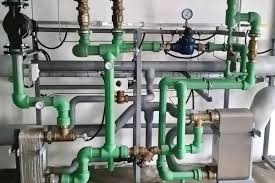Nov . 10, 2024 10:24 Back to list
Understanding the Applications and Benefits of PPR Polypropylene Pipes in Various Services
Understanding PPR Polypropylene Pipe Service A Comprehensive Guide
Polypropylene randomly copolymer, commonly referred to as PPR, has captured the attention of engineers, contractors, and DIY enthusiasts in recent years. Its revolutionary properties and multifunctional applications have made it a preferred choice for a wide variety of piping services. In this article, we will delve into the advantages, applications, installation techniques, and maintenance tips associated with PPR polypropylene pipe service.
What is PPR Pipe?
PPR pipe is made from a type of plastic known as polypropylene, recognized for its toughness and versatility. The random copolymerization process grants the resulting material superior flexibility, chemical resistance, and thermal stability. It is typically characterized by its green or white color, with standard dimensions for various applications.
Advantages of PPR Pipes
1. Durability One of the most significant benefits of PPR pipes is their long service life. They are resistant to corrosion, scale, and rust, which means they can endure extreme conditions without deteriorating.
2. Temperature Resistance PPR pipes can handle high temperature water applications, with a service temperature range of -20°C to +95°C. This makes them ideal for both hot and cold water systems, including heating and plumbing.
3. Non-Toxic Properties PPR pipes are safe for potable water use. They do not leach harmful chemicals into the water, making them an excellent option for residential and commercial plumbing.
4. Lightweight Compared to traditional materials like PVC or metal, PPR pipes are significantly lighter, which simplifies handling and installation.
5. Easy Installation The installation process of PPR pipes is straightforward. They can be fused together using a heat fusion method, ensuring a secure and leak-proof connection.
6. Cost-Effective Though the initial investment might be higher than other materials, the long lifespan and reduced maintenance costs often translate into more savings in the long run.
Applications of PPR Pipes
PPR piping systems are suited for a variety of applications, including
1. Residential Plumbing They're commonly used for drinking water supply systems, hot water systems, and central heating applications.
2. Industrial PPR pipes find applications in chemical transportation, food processing, and air conditioning systems due to their chemical resistance and durability.
ppr polypropylene pipe service

4. HVAC Systems PPR pipes are ideal for heating and cooling systems due to their insulation and resistance to thermal expansion.
Installation Techniques
The effectiveness of PPR pipe service significantly relies on proper installation techniques. Here are the key steps
1. Preparation Before starting, ensure all tools and components are ready. Cut the pipes to the desired lengths using a pipe cutter for a clean edge.
2. Heating Use a fusion tool to heat the pipe and fitting ends simultaneously. The temperature should typically be around 260°C to achieve optimal fusion.
3. Joining Once the ends are heated, quickly remove them from the fusion tool and push them together with a slight twisting motion. Maintain pressure for a few seconds to secure the bond.
4. Cooling Allow the joint to cool naturally. Avoid disturbing the joint to ensure a solid bond forms.
5. Testing After installation, conduct a pressure test to ensure there are no leaks in the system.
Maintenance Tips
PPR pipes require minimal maintenance, making them a convenient choice for property owners. However, some simple practices can enhance their longevity
1. Regular Inspection Periodically inspect the system for signs of wear, heat exposure, or irregularities in water flow.
2. Avoid Chemical Exposure While PPR pipes are resistant, they should not be exposed to aggressive chemicals that can compromise their integrity.
3. Proper Insulation Insulating pipes in cold climates can prevent freezing and cracking.
Conclusion
PPR polypropylene pipes stand out in the world of plumbing and piping services due to their impressive range of benefits and applications. Their durability, safety, and ease of installation make them a top choice for new projects and upgrades alike. By understanding how to properly install and maintain these pipes, homeowners, contractors, and engineers can ensure a robust and reliable piping infrastructure for years to come. Embracing PPR technology is not just a step toward modern plumbing solutions; it’s an investment in efficiency, safety, and sustainability.
-
32mm HDPE Pipes Coil: Durable & Flexible Water Supply
NewsAug.05,2025
-
DN100 PVC Well Casing Pipes | Durable Corrosion-Proof
NewsAug.04,2025
-
HORON 25mm PPR Plumbing Pipes - AI-Enhanced & Reliable
NewsAug.03,2025
-
HORON 25mm PPR Pipes - AI-Optimized Plumbing Excellence
NewsAug.02,2025
-
Premier HDPE Sprinkler Pipe Manufacturers | Durable Solutions
NewsAug.01,2025
-
DN500 HDPE Double Wall Corrugated Drain Pipes | Durable & Efficient
NewsJul.31,2025

